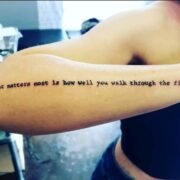These are a set of guidelines that would help you when you present your project to everyone:
Talk to the audience. Avoid talking to the floor, to the wall or to the projector screen. Try to keep contact with your audience. Seek eye contact with your supervisor, examiner or even your friends who are listening. But also do so without staring at anyone.
During the talk you will of course have to face the projector screen sometimes, for example to point out details shown on the slides.. Show the slides properly. Avoid showing a slide for just a second or two before going on to the next one. In most cases, there is no way that anybody in the audience will grasp the information on your slide within seconds. It is easy to overestimate the speed at which people can grasp the information. You may have spent a long time writing, revising and thinking about the contents of a particular slide, and therefore the information on it may seem obvious to you. The audience, on the other hand, is seeing it for the first time, and they need some time to read and interpret it.
Explain things. For each slide you have to explain clearly to the audience what it shows. If, for example, the slide contains a line graph, you have to tell the audience what the x and y-axes represent (always include legends for all figures and graphs on your slides). Otherwise, the graph is meaningless to look at. Do not expect the audience to find out things for themselves by reading the slide.
Keep an eye on the time. Use your allocated time well. If you have, for example, 20 min for your talk, then practice the talk so that you know how long each part takes. Also leave a margin, so that you don’t find yourself running out of time and having to skip some parts. If you do run out of time when presenting, you may have to jump directly to the slide that conclude your talk when there is a minute or so left of the allotted time. Monitor the tempo. Do not talk too fast, or too slowly. Perhaps you can ask your supervisor beforehand to give you signals as to whether you are talking too fast or too slowly. You can vary the tempo and your voice during the talk in order to emphasise certain things in the presentation.
Avoid reading word by word from the slide. This should be done only occasionally, when the slide contains, for example, a very important definition, or a quote that is fundamental for your work and very important to communicate exactly to the audience. Otherwise, you should not treat the slides as part of your manuscript. Normally, your slide should contain short phrases, whereas your talk should be more explanatory.
Use a glass of water. If you get uncertain or nervous during your talk, it can be a good idea to have some form of distraction. The act of reaching for a glass of water, for example, serves as a useful mini break. The audience might think that you are just sipping water for a couple of seconds, but during these few, but valuable seconds, you have time to calm down, soothe the dry throat, and even think 12 Presenting and Defending your Work Orally through, for example, how to introduce the next slide or give a good answer to a question from the audience.
Do not block the view. Find a convenient place were you can stand, so that you do not block the projected slides. This issue of not blocking the view is also of importance if you are using transparencies and an overhead projector. When pointing to figures etc., it is generally better to point to the projection screen rather than to the transparency on the projector. . Use a pointing device. Think beforehand about how you will point to things on your slides if you need to. This is particularly important if you are using transparencies, where pointing at the slide itself would force you to look right into the light of the projector, so that when you look back up again you can only see black spots. A better method is to use a laser pointer or a stick. If you use a laser pointer, the time to find out how it works is before the talk, rather than during it. If you use a stick, try to avoid showing your nervousness by swinging it back and forth or otherwise jiggling it. Unless you use it very often, put it down on the desk when you do not need it.
No matter how well you have prepared beforehand, do not be surprised if you feel a bit nervous at the beginning of the presentation. This is normal, and happens to almost everybody, no matter how many times they have given presentations before. If the nervousness is so bad that it really troubles you, it may help to remember the examiner and the rest of the audience are interested in your project, and not in whether you are nervous or not. If the content of your talk is of high quality, then a trembling voice or shaky fingers are of no consequence, and may not even be noticed by anyone.





